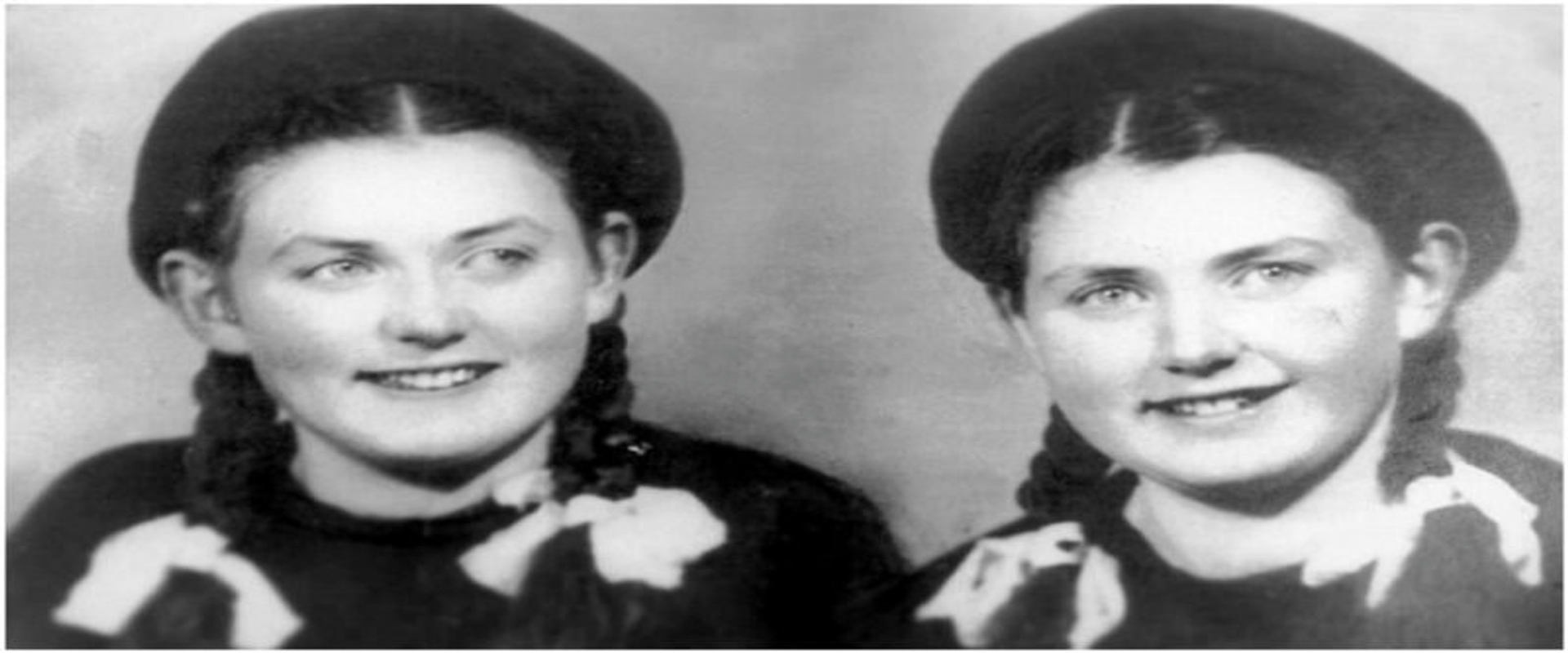The Twins of Auschwitz
July 25, 2021 | 5 min read

July 25, 2021 | 5 min read

World War II is notorious for the gruesome and inhumane treatment of the Jews and other marginalized groups by the Nazis. Mass genocides were mercilessly conducted in gas chambers and extermination camps. The Nazis' justification for genocide was the ancient claim, passed down through Nordic legends, that Germans were superior to all other groups and constituted a "master race." This "master race'' consisted of blue-eyed, blond-haired people of Nordic stock, or "Aryans." As such, they had the right to declare who was worthy of life and who was not, who was to be maimed by sterilization or experimented upon in the interest of attaining racial purity.
Josef Mengele was a Nazi doctor in the Auschwitz death camps. Mengele was called the Angel of Death for ordering the killing of millions by the flick of his wrist. The brutal Nazi regime allowed him to conduct experiments in inhumane conditions on the captives. Under the false name of “treatment,” he injected people with poisonous chemicals and lethal doses of drugs to study the human body’s reaction. Before Auschwitz, Mengele was an assistant to a well-known researcher who studied twins at the Institute for Heredity Biology and Racial Hygiene in Frankfurt. But Auschwitz was his key to an unlimited supply of test subjects and no ethical obligations holding him back.
He was particularly interested in studying twins. Twin studies play an essential role in revealing the genetic and environmental factors that affect heredity. Our genes play a major role in our physical appearance, psychological development, immune response, and so much more. Our unique DNAs are the blueprints for our entire being. While biological siblings have the same parent genes, recombination results in them sharing only about 50 percent of their DNA. While this is also the case for fraternal/ dizygotic twins, identical twins share 100 percent of the same DNA. The probability of having identical twins is about 1 in 250; hence they proved to be a valuable resource for Mengele. His goal seemed to be to understand heredity, especially the inheritance of the ability to bear twins, which would help him develop a superior race.
However, Mengele was brutal with his experimentation. Twins as young as four years old were hunted in camps and separated from their parents, who were sent to gas chambers. In the labs, children were kept in cages and injected multiple times a day. These often led to them getting severely sick and weak. Organs were removed from bodies without anesthetic, and if one twin died, they killed the other. He tried using various chemicals to manipulate the eye color, possibly to attain the bright blue “Aryan” eyes. He even collected the eyes of dead victims to study further heterochromia (a condition where the iris of the eyes have different colors). Their bodies were measured and compared, sometimes even disfigured in an attempt to test the bounds of human tolerance. Cold, naked, and afraid, these children spent years in captivity and abuse. That is if they survived it.
These children who were separated from their parents found a father figure in Mengele. Some survivors even look back at their time at Auschwitz with a fondness for their captor. Many of them have no memory of what happened to them. Survivors Eva Mozes Kor and her sister Miriam Mozes Zieger founded Children of Auschwitz Nazi Deadly Lab Experiments Survivors in an effort to locate other surviving Mengele twins.
The term "eugenics" was coined by Francis Galton, who conducted twin studies as his early research. Many of the studies conducted at the time were deemed questionable in terms of modern ethics. Eugenicists at the time had a goal of creating the perfect human by selective breeding and monitoring heredity. While twins may play an important role in debating the “nature vs. nurture” debate, they gave no particular conclusion in terms of achieving a perfect human race.
Today, eugenic studies are often seen as racially discriminating due to its history of being a study in eliminating “undesirable” people, which was often in a racist sense. Modern eugenics could be seen as genetic testing for hereditary diseases. Parents can test to see if they are carriers for certain diseases or if their unborn child faces any genetic irregularities. However, as our understanding of the human genome grows, we must also strive to achieve development most ethically and inclusively.